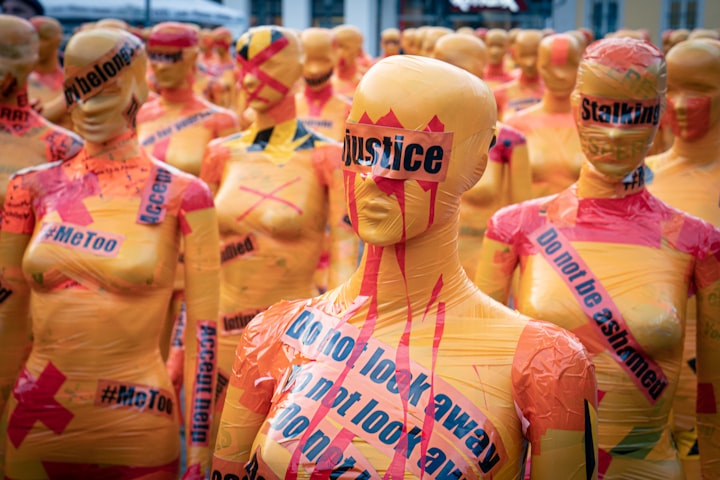
In the heart of a small town, hidden behind the towering walls of an old courthouse, lay a forgotten story. For decades, the community had carried the weight of a painful past, an unspoken burden that cast a shadow over their lives. But on a fateful day, the winds of change began to blow, and the town found the courage to embark on a journey of historical truth-telling and acknowledgement of past injustices.
The story began many years ago, when the town was divided by deep-rooted prejudices and discriminatory practices. The marginalized communities, silenced and oppressed, bore the brunt of the town's dark history. Their voices were muffled, their stories dismissed, and their pain brushed aside.
But the winds of change carried whispers of justice, and a group of passionate individuals rose to the occasion. They recognized the power of truth and the healing that comes with acknowledging the wrongs of the past. Led by a determined historian named Sarah, they began a quest for truth, armed with the conviction that acknowledging history was essential for the town's collective healing and progress.
Sarah spent countless hours poring over archival documents, interviewing elders, and unearthing forgotten narratives. She listened to the stories of pain and suffering, their voices etched with the weight of years of silence. As the pieces of the puzzle fell into place, she felt a heavy responsibility to bring the truth to light, no matter how painful it may be.
The town's journey of historical truth-telling began with a series of community gatherings. Sarah and her team arranged public forums, inviting all members of the town to participate and share their stories. The air was thick with anticipation and apprehension as people gathered, unsure of what lay ahead. But there was an undeniable sense of longing for healing, a shared hope that truth would pave the way for reconciliation.
One by one, brave individuals stepped forward, their voices shaking with emotion. They shared stories of discrimination, racial violence, and systemic oppression that had been silenced for far too long. The weight of their words hung in the air, causing hearts to ache and tears to flow. The wounds of the past were raw, but the truth had to be heard.
As the stories unfolded, an awakening took hold of the town. The veil of ignorance was lifted, and the shared pain ignited a flame of empathy and understanding. People began to realize that the injustices of the past had shaped their present reality. The town's collective conscience stirred, demanding accountability and change.
Acknowledgement became the cornerstone of the healing process. The town leaders took a bold step by issuing an official proclamation, acknowledging the historical injustices and expressing remorse on behalf of the community. The proclamation was read aloud in a solemn ceremony, attended by community members, leaders, and representatives of marginalized communities. Tears flowed freely as the weight of centuries-old pain was finally recognized.
The journey of acknowledgement did not end there. The town established a Truth and Reconciliation Commission, a platform for individuals to share their experiences and contribute to the collective healing process. Through public hearings, testimonies, and mediated dialogues, the Commission worked to foster understanding, promote empathy, and chart a path towards reconciliation.
The impact of historical truth-telling rippled through the town. Schools introduced inclusive curricula, teaching the true history of the community and the importance of respect for all. Community centers and museums were established to honor the stories and experiences of marginalized communities, ensuring that the past would never be forgotten.
With time, the town transformed into a beacon of hope and progress. The wounds of the past were not forgotten, but they no longer defined the community. Instead, the acknowledgment of past injustices became a catalyst for change, a foundation upon which a more just and inclusive society was built.
Demonstrating sincere remorse and a commitment to preventing the recurrence of past injustices is a crucial aspect of reconciliation processes and initiatives. Here are some key elements of showcasing genuine remorse and fostering a commitment to change:
Acknowledgment of Responsibility: Recognizing and accepting responsibility for the actions, policies, or systems that perpetuated past injustices. This acknowledgment is essential for creating an environment of truth and accountability.
Empathy and Listening: Demonstrating empathy towards those who have suffered and actively listening to their experiences and perspectives. This helps to validate their pain, build trust, and foster understanding.
Apologies and Reparations: Offering sincere and meaningful apologies that acknowledge the harm caused and the need for restitution. Apologies should be accompanied by concrete actions, such as reparations or compensation, to address the material and emotional damage inflicted.
Education and Awareness: Promoting education and raising awareness about the history of past injustices, ensuring that future generations understand the consequences of such actions. This includes integrating accurate historical narratives into educational curricula and engaging in public awareness campaigns.
Systemic Reforms: Taking tangible steps to reform laws, policies, and institutions that contributed to past injustices. This may involve addressing structural inequalities, promoting equal rights and opportunities, and dismantling discriminatory practices.
Restorative Justice: Implementing mechanisms that prioritize the needs of victims and affected communities. This includes providing support for healing, trauma recovery, and community-building initiatives that empower those who have suffered.
Collaborative Partnerships: Engaging in partnerships and consultations with affected communities, civil society organizations, and experts to develop and implement effective strategies for preventing the recurrence of past injustices. Collaboration ensures that diverse perspectives are considered and that solutions are inclusive and sustainable.
Accountability and Transparency: Establishing mechanisms for accountability, such as independent oversight bodies, to ensure that commitments to preventing the recurrence of past injustices are upheld. Transparency in decision-making processes and reporting progress helps build trust and legitimacy.
Continuous Learning and Improvement: Embracing a culture of continuous learning, reflection, and adaptation. This involves regularly evaluating the effectiveness of reconciliation efforts, seeking feedback from affected communities, and making necessary adjustments to improve outcomes.
Long-Term Commitment: Recognizing that reconciliation is a long-term process that requires ongoing dedication and resources. Sustained commitment ensures that efforts to prevent the recurrence of past injustices remain a priority even as circumstances change.
By demonstrating sincere remorse and a commitment to preventing the recurrence of past injustices, individuals, institutions, and societies can create a foundation for healing, reconciliation, and the establishment of a more equitable and inclusive future.
About the Creator
Shamba
https://sites.google.com/view/iphone15x/home?read_current=1 Latest Trending Giveaway 2024






Comments
There are no comments for this story
Be the first to respond and start the conversation.